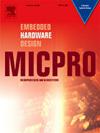Open-source ROS-based simulation for verification of FPGA robotics applications
IF 2.6
4区 计算机科学
Q3 COMPUTER SCIENCE, HARDWARE & ARCHITECTURE
引用次数: 0
Abstract
FPGAs are increasingly incorporated in many high-end robotics applications, often involving computer vision and motor control. However, functional verification of FPGA designs is labor-intensive, time-consuming, and consequently expensive. Moreover, validation of complex systems, such as robots, poses even further challenges because neither the external interactions can be easily modeled with traditional testbenches nor the robot’s response can be adequately observed and ascertained. This work presents a new methodology that validates the robot’s behavior in a realistic simulated environment before transferring the design to the physical robot and the onboard FPGA. This methodology allows integral, fast, and flexible debugging cycles of robotics applications by integrating the functional simulation of the processing unit (FPGA) with the simulation of the robot, its environment, and their mutual interconnections. The Verilator simulation tool is used for fast Verilog/SystemVerilog verification and simulation. ROS, the standard robotics middleware, and Gazebo 3D robotics simulator are used for realistic robot simulation, including a robust physics engine. We have implemented several open-source software extensions to interconnect the Verilog circuit with the simulated ROS sensors and actuators. This methodology’s utility and correctness have been assessed by developing a complete proof-of-concept FPGA-based robotics application in which a commercial robot follows a colored object using its onboard camera and differential drive motors. This work establishes the foundations for developing and testing complex robot FPGA-based modules more efficiently and flexibly.
开源的基于ros的FPGA机器人应用验证仿真
fpga越来越多地应用于许多高端机器人应用,通常涉及计算机视觉和电机控制。然而,FPGA设计的功能验证是劳动密集型的,耗时的,因此是昂贵的。此外,对复杂系统(如机器人)的验证提出了进一步的挑战,因为传统的试验台既不能轻易地对外部相互作用进行建模,也不能充分观察和确定机器人的响应。这项工作提出了一种新的方法,在将设计转移到物理机器人和板载FPGA之前,在真实的模拟环境中验证机器人的行为。这种方法通过将处理单元(FPGA)的功能模拟与机器人、其环境及其相互连接的模拟相结合,允许机器人应用程序的集成、快速和灵活的调试周期。Verilator仿真工具用于快速Verilog/SystemVerilog验证和仿真。ROS,标准机器人中间件和Gazebo 3D机器人模拟器用于逼真的机器人模拟,包括一个强大的物理引擎。我们已经实现了几个开源软件扩展,将Verilog电路与模拟ROS传感器和执行器互连。该方法的实用性和正确性已经通过开发一个完整的基于fpga的概念验证机器人应用程序进行了评估,其中一个商业机器人使用其机载摄像头和差动驱动电机跟踪彩色物体。为更高效、灵活地开发和测试复杂的机器人fpga模块奠定了基础。
本文章由计算机程序翻译,如有差异,请以英文原文为准。
求助全文
约1分钟内获得全文
求助全文
来源期刊

Microprocessors and Microsystems
工程技术-工程:电子与电气
CiteScore
6.90
自引率
3.80%
发文量
204
审稿时长
172 days
期刊介绍:
Microprocessors and Microsystems: Embedded Hardware Design (MICPRO) is a journal covering all design and architectural aspects related to embedded systems hardware. This includes different embedded system hardware platforms ranging from custom hardware via reconfigurable systems and application specific processors to general purpose embedded processors. Special emphasis is put on novel complex embedded architectures, such as systems on chip (SoC), systems on a programmable/reconfigurable chip (SoPC) and multi-processor systems on a chip (MPSoC), as well as, their memory and communication methods and structures, such as network-on-chip (NoC).
Design automation of such systems including methodologies, techniques, flows and tools for their design, as well as, novel designs of hardware components fall within the scope of this journal. Novel cyber-physical applications that use embedded systems are also central in this journal. While software is not in the main focus of this journal, methods of hardware/software co-design, as well as, application restructuring and mapping to embedded hardware platforms, that consider interplay between software and hardware components with emphasis on hardware, are also in the journal scope.
 求助内容:
求助内容: 应助结果提醒方式:
应助结果提醒方式:


